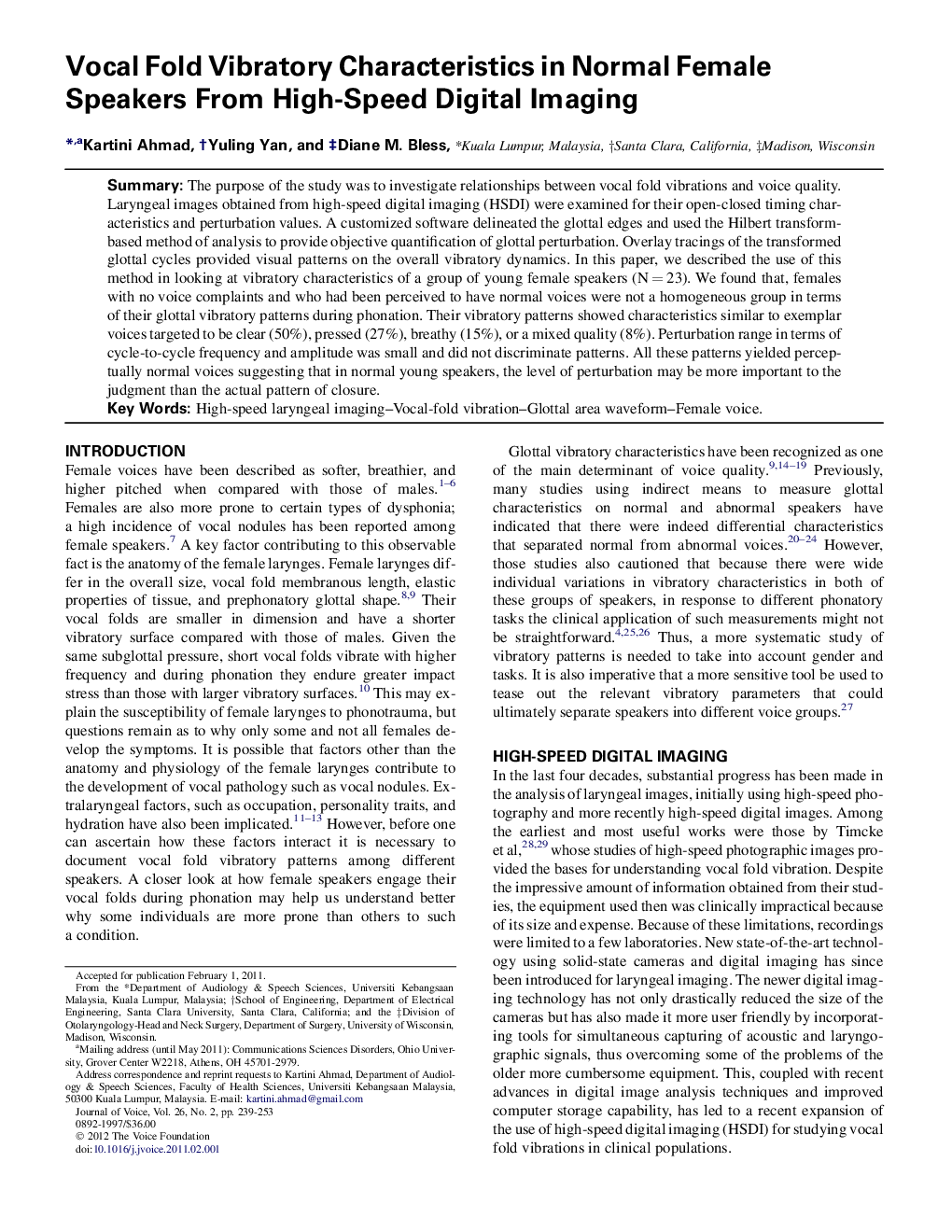| Article ID | Journal | Published Year | Pages | File Type |
|---|---|---|---|---|
| 1102274 | Journal of Voice | 2012 | 15 Pages |
SummaryThe purpose of the study was to investigate relationships between vocal fold vibrations and voice quality. Laryngeal images obtained from high-speed digital imaging (HSDI) were examined for their open-closed timing characteristics and perturbation values. A customized software delineated the glottal edges and used the Hilbert transform-based method of analysis to provide objective quantification of glottal perturbation. Overlay tracings of the transformed glottal cycles provided visual patterns on the overall vibratory dynamics. In this paper, we described the use of this method in looking at vibratory characteristics of a group of young female speakers (N = 23). We found that, females with no voice complaints and who had been perceived to have normal voices were not a homogeneous group in terms of their glottal vibratory patterns during phonation. Their vibratory patterns showed characteristics similar to exemplar voices targeted to be clear (50%), pressed (27%), breathy (15%), or a mixed quality (8%). Perturbation range in terms of cycle-to-cycle frequency and amplitude was small and did not discriminate patterns. All these patterns yielded perceptually normal voices suggesting that in normal young speakers, the level of perturbation may be more important to the judgment than the actual pattern of closure.
